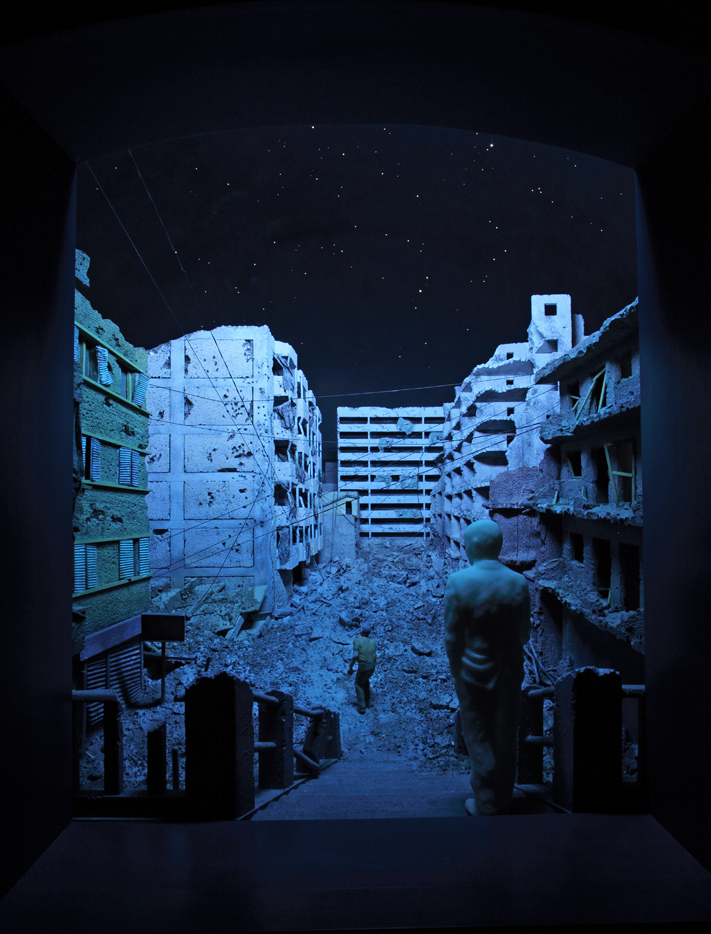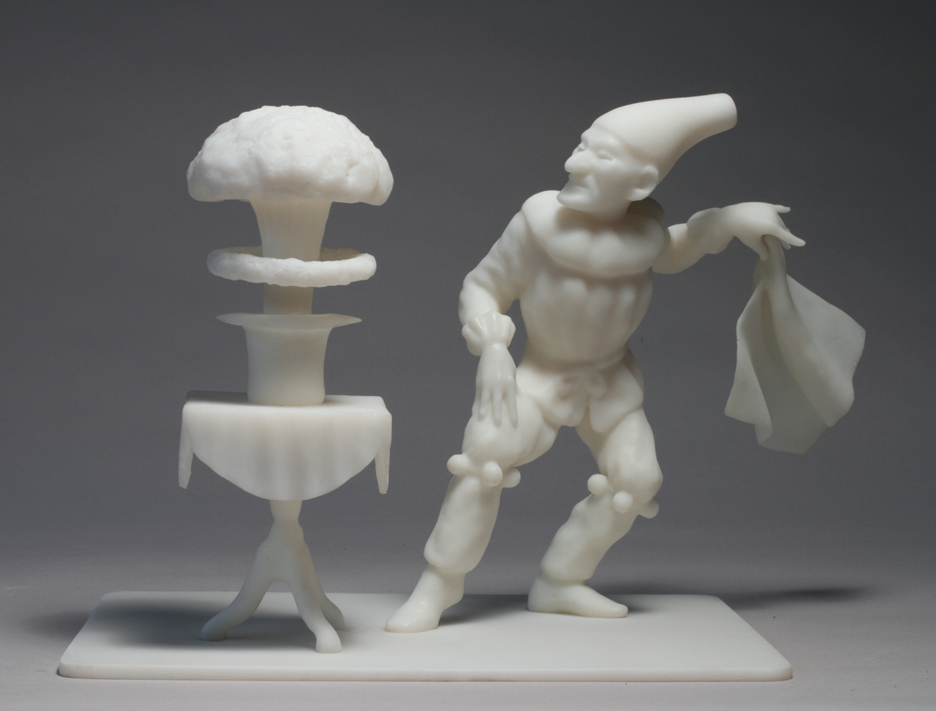Exotic, Eerie Sculptures by Robert Taplin at Grounds

Robert Taplin’s “Heaven, Hell, and the History of Punch,” on view now through April at Grounds for Sculpture in Hamilton, tweaks a traditional art discipline with its whimsy, wonder and nip of satire. This exhibition brings together, for the first time, a diverse body of work produced by the Connecticut-based artist over the past 10 years. And while the three themes — the planets, Dante’s Inferno and the story of Italian bad-boy Pulcinella — may seem like an unusual grouping, the exhibition as a whole has a remarkable flow and energy.

Another aspect of this display is how it presents and redefines — at least for me, an untrained but avid art lover — the fundamental form of sculpture. “Casting is an ‘ancient’ technique,” Taplin explains, “sort of like running in sports. It’s old and has undergone very few changes.” So no matter how a work looks upon completion, the ageless creative process is essentially the same. As the artist says (and vividly demonstrates here), “the traditional is exotic.”
Exotic is a good description for Taplin’s works.
“The Five Outer Planets” (2004) presents Jupiter, Saturn, Uranus, Neptune and Pluto, relatively proportioned and positioned and suspended from the soaring ceiling of the Museum Building at Grounds for Sculpture. The gallery space is fully utilized by the sculptures — the floor, ceiling and walls are engaged — creating a “complete environment,” according to the artist. Taplin’s planets are classically rendered and heroically scaled. But they are pudgy, bald men.
Each planet is actually a pair: one of translucent fiberglass resin, lit from within, and the other of plaster. “It’s the physical — the solid, the dark, the heavy — interwoven with the story. It's mind/body dualism,” Taplin explains.

“They are a family group,” he elaborates. “Jupiter, the sky god, is in charge; Saturn’s the father; Uranus is the grandfather; Neptune and Pluto, the brothers.” But these figures don’t resemble gods of your imagination. Instead, Taplin playfully likens them to an encounter with “your aging father getting out of the shower.”

Regardless, this display makes a powerful statement — of the viewer's choosing. “The point of fine art,” Taplin says, “is to provide an individual experience.”
Taplin, who has two other exhibitions on view in the Museum Building, describes the space as “perfect.” As we walk through the galleries, he notes, “There are three separate areas, but they are interrelated.”
Opposite the planetary bodies is “Everything Imagined Is Real (After Dante),” a series based on Dante’s Inferno. Nine narratives in sculptural figures and dioramas chronicle the descent into Hell and feature, in Taplin’s words, “all sorts of weirdness.”
A particularly powerful piece, “Across the Dark Waters (The River Acheron),” includes more than 100 sculpted figures — some trying to cross the body of water, some observing, some going about their daily business — and uses forced perspective to challenge the viewer’s perception. Taplin calls the forms “drifty” and “dodgy,” adding that “they won’t stay still.” Amazingly, Taplin creates inanimate forms that clearly convey life force and energy.
Another piece, “She Turned Away (Beatrice Sends Virgil to Dante),” shows a trio of characters sitting in a dimly lit dining room, plainly in the midst of a situation. When I mention to Taplin that the scene seems so realistic, especially compared to others in the exhibition, he replies that the room is a reproduction — down to the furniture and accessories — of his home. “My work is often biographical,” he explains. “Sometimes it is overt, like this room, and other times it is more subtle.”
Taplin reveals that the nine works were not made in order, but the path from beginning to end is apparent. It is evident how thoroughly Taplin immersed himself in the dark tale. He learned Italian to read (and re-read) Dante’s Inferno, studied with a professor and “plucked verse statements from each canto, then built the sculptural pieces around those.”
Wow.
The mood changes in the upstairs gallery, where we find the “Punch” series, depicting the commedia dell’arte street-theater character of Pulcinella. “He was socially rebellious, better known for taking liberties than preserving liberty,” Taplin observes of the medieval mischief-maker.
With the trickster Punch cast in scenarios both timeless and current, Taplin creates an accessible and humorous form of social commentary. “I put him in controversial situations, which he can usually get out of,” he says. Like a smarmy character in a tabloid news story, Punch irritates and fascinates us. “We dislike him and envy him at the same time.”
In the Meadow outside the Museum Building we find “Further History of Punch,” featuring two large-scale Punch sculptures: “The Young Punch Goes Shopping with His Mother” (2010), a version of the piece indoors, enlarged 10 times, and “Punch Is Homeless,” a major outdoor work commissioned for this exhibition.
“Heaven, Hell, and the History of Punch” may be seen at Grounds for Sculpture, 18 Fairgrounds Road, Hamilton, through April 2013. Grounds is open Tuesdays-Sundays from 10 a.m. to 6 p.m. Admission is $12 for adults, $10 for seniors, $8 for children ages 6-17 and free for youngsters age 5 and under.
